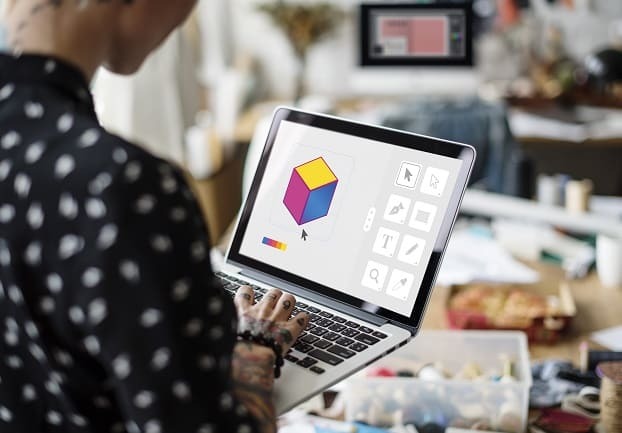
 Data Structure
Data Structure Networking
Networking RDBMS
RDBMS Operating System
Operating System Java
Java MS Excel
MS Excel iOS
iOS HTML
HTML CSS
CSS Android
Android Python
Python C Programming
C Programming C++
C++ C#
C# MongoDB
MongoDB MySQL
MySQL Javascript
Javascript PHP
PHP
- Selected Reading
- UPSC IAS Exams Notes
- Developer's Best Practices
- Questions and Answers
- Effective Resume Writing
- HR Interview Questions
- Computer Glossary
- Who is Who
What is the full form of CEED?
Introduction
Common entrance examination for design (CEED) is a national-level entrance exam performed in India for admission to postgraduate programs in layout. The exam is administered by using the Indian Institute of technology Bombay (IITB) on behalf of the Ministry of Human aid improvement, government of India.

The examination assesses a candidate's innovative and hassle-fixing abilities, visual perception, and conversation talents. CEED scores are usual by way of various institutes throughout India that provide guides in layout. The examination is divided into two components- component A is a computer-primarily based test, and part B is a pen-and- paper test that assesses a candidate's design and drawing abilties. CEED qualified candidates can pursue a career in diverse fields like product layout, animation, graphic design, and more.
Exam Pattern
The common entrance examination for design (CEED) is a -component examination that evaluates a candidate's creative and trouble-solving abilities, visual perception, and communique skills.
part A is a computer-based check that assesses a candidate's logical reasoning, comprehension, and analytical talents. The test duration is three hours, and it accommodates 3 sections - Numerical answer type (NAT) questions, multiple select Questions (MSQ), and multiple choice Questions (MCQ).
The NAT questions do now not have any options and require the candidate to go into the answer within the given area using the virtual numeric keypad. The MSQ and MCQ questions have options, and candidates should choose the best answer(s) from the given alternatives. the overall marks allotted for component A are a hundred marks.
Component B is a pen-and-paper test that assesses a candidate's design, drawing, and writing abilities. The duration of the test is hours. It comprises questions that compare a candidate's potential to create and develop layout standards, talk design thoughts efficiently, and exhibit their creativity thru drawing and sketching. The most marks allocated for part B is 100 marks.
Candidates have to qualify in each part A and component B to be eligible for admission to the layout publications supplied by way of numerous institutes across India. The weightage given to component A and part B ratings might also range for special institutes, and applicants should take a look at the admission criteria of the institutes they're inquisitive about earlier than making use of.
To excel in CEED, candidates should have an excellent expertise of design ideas and ideas, robust visualization and drawing competencies, and tremendous verbal exchange abilities. it is advocated that applicants practice preceding years' query papers, paintings on developing their drawing and layout capabilities, and cognizance on time control at some stage in the examination.
Eligibility Criteria
The eligibility criteria for the common entrance examination for design (CEED) had been defined by the accomplishing authority, i.e., Indian Institute of technology (IIT) Bombay. The eligibility standards for CEED are as follows
Age restrict there may be no age limit for candidates who desire to use for CEED.
Academic Qualification applicants should have one of the following qualifications
Bachelor's degree in Engineering/structure/design/interior design or equivalent (four years period after 10+2)
Professional degree in design (NID/CEPT, or equal of 4 years duration after 10+2)
Bachelor's degree in fine Arts (BFA) (4-year professional program after 10+2)
G.D. art (five-yr program after tenth) with one year post-qualification revel in or degree in implemented art (5-year program after 10th) with one year post-qualification experience
Master's degree in Arts/science/computer applications
Nationality CEED is open to Indian nationals, foreign nationals, overseas citizens of India (OCI), and persons of Indian origin (PIO). foreign nationals, OCI, and PIO applicants have to check the eligibility standards of the institutes they are inquisitive about earlier than applying, as some institutes may also have precise eligibility criteria for overseas nationals.
Applicants who're within the very last yr in their qualifying diploma software also can apply for CEED. but, they must offer proof of passing the qualifying exam before the desired date by the admitting institute.
It is essential for applicants to fulfil the eligibility standards before making use of CEED. Candidates who do not meet the eligibility criteria will not be allowed to appear for the examination, and their candidature will be cancelled. Therefore, applicants should cautiously read and apprehend the eligibility criteria before making use of CEED.
Scope and Career Opportunities
The common entrance examination for design (CEED) is a prestigious examination that offers a huge variety of career opportunities in the subject of design. a few career opportunities that a candidate can pursue after clearing the CEED examination are
Industrial designer commercial designers work on designing and growing products for quite a number industries together with customer goods, electronics, car, and scientific gadget.
Graphic designer graphic designers create visual concepts, using laptop software or by hand, to communicate ideas that inspire, inform, and captivate consumers.
User experience (UX) designer UX designers design and increase person-friendly interfaces for websites and mobile applications that enhance consumer experience.
Automobile designer vehicle designers work on designing and growing diverse components of an vehicle, consisting of the exterior, interior, and mechanical parts.
Interior designerv interior designers plan and design the format and decor of industrial and residential spaces, inclusive of offices, homes, and accommodations.
Product designer Product designers create designs for consumer products together with furniture, toys, and household appliances, maintaining in mind the cultured attraction and capability of the product.

Packaging designer Packaging designers work on designing packaging for products, preserving in mind the branding, packaging policies, and environmental effect.
Textile designer fabric designers work on designing and developing patterns and prints for textiles, together with apparel, furnishings, and accessories.
The profession possibilities inside the discipline of layout are significant and sundry, and applicants can pick to specialize in their location of hobby. With the increasing demand for design experts in numerous industries, the scope of a career in layout is enormous and promising.
Conclusion
In end, the common entrance exam for Design (CEED) is a fairly esteemed exam that offers candidates a wide variety of professional opportunities in the field of design. CEED has grown to be the gateway for admission to numerous premier design institutes in India. The examination is designed to check the candidate's creativity, trouble-solving potential, visual belief, and conversation capabilities. With the growing demand for design specialists in various industries, a profession in layout has emerged as a promising and rewarding choice for college students. applicants who desire to pursue a career in design ought to satisfy the eligibility criteria and be put together properly for the CEED exam to comfy admission to their desired institute.
FAQs
Q1. What is CEED, and who conducts the examination?
Ans: CEED stands for common entrance exam for design. it is carried out through the Indian Institute of technology (IIT) Bombay.
Q2. What's the reason for the CEED exam?
Ans: The CEED exam is performed to evaluate a candidate's creativity, trouble-solving capacity, visual perception, and conversation abilities. The examination is used as a criterion for admission to numerous postgraduate applications in design.
Q3. What is the eligibility criteria for the CEED exam?
Ans: The eligibility criteria for CEED encompass age restrict, academic qualification, and nationality.candidates ought to have a Bachelor's degree in Engineering/architecture/layout/indoors layout or equal (4 years period after 10+2) or different applicable qualifications. there is no age limit for candidates.

